In this edition, we'll be covering the following topics:
- New A92 Suite of Standards – Are we there yet?
- Driver Jailed for Forklift Death.
- Man Electrocuted in South LA after boomlift basket touches power line.
- Ask Bob: Our tech guru addresses a question on safe distance from power lines.
- Safe + Sound Week to return Aug 13-19.
- OSHA Fines Manufacturer $129,000 for Worker Injured in Scissor Lift Incident.
- Last chance to register!
- What's Wrong With This? Photo and answer.
- A selection of interesting articles.
- New testimonials from our wonderful clients.
But first, check out all the places we delivered training this month...

New A92 Suite of Standards - Are we there yet?
 Back in June of 2016, we reported that the release of new ANSI and CSA industry standards addressing mobile elevating work platforms (MEWPs, formerly aerial lifts) was just around the corner. Since that time, the CSA standards were released as expected but delays in the approval process for the ANSI standards occurred and as such, they have yet to be released.
Back in June of 2016, we reported that the release of new ANSI and CSA industry standards addressing mobile elevating work platforms (MEWPs, formerly aerial lifts) was just around the corner. Since that time, the CSA standards were released as expected but delays in the approval process for the ANSI standards occurred and as such, they have yet to be released.
Presently, the new ANSI A92 suite of standards has managed to work itself through the system and once again, its release is at hand as soon as the spring of 2018. With that in mind, we offer a repeat of the article that originally ran in the June 2016 edition of the IVES Update with some revisions, in case you forgot.
New Aerial Lift Standards Getting Close
View this article as a PowerPoint presentation here!
Those of you that train operators of aerial boomlifts and/or scissor lifts take note, a brand new series of ANSI A92 standards are coming and will probably be released by the spring of 2018. The titles of these new standards are:
ANSI:
- A92.20 – Establishing Design, Calculations, Safety Requirements and Test Methods for Mobile Elevating Work Platforms (MEWPs).
- A92.22 – for the Safe Use of Mobile Elevating Work Platforms (MEWPs).
- A92.24 – Establishing Training Requirements for the Use, Operation, Inspection, Testing and Maintenance of Mobile Elevating Work Platforms (MEWPs).
This new series or “suite” of standards will unite and replace the following four existing ANSI standards:
- A92.3 – for Manually Propelled Aerial Platforms.
- A92.5 – for Boom-Supported Elevating Work Platforms.
- A92.6 – for Self-Propelled Elevating Work Platforms.
- A92.8 – for Vehicle-Mounted Bridge Inspection and Maintenance Devices.
At the present time, discussions are still underway as to whether ANSI/SAIA A92.2 – for Vehicle-Mounted Elevating and Rotating Aerial Devices and A92.7 – for Airline Ground Support Vehicle-Mounted Vertical Lift Devices, will also be incorporated into the new suite, but we will keep you posted on any developments there as they occur.
On the Canadian side of things, the titles of the new standards that were released in May of 2017 are:
CSA:
- B354.7 – Mobile Elevating Work Platforms – Design, Calculations, Safety Requirements and Test Methods.
- B354.8 – Mobile Elevating Work Platforms – Safety Principles, Inspection, Maintenance and Operations.
- B354.9 – Mobile Elevating Work Platforms – Operator (Driver) Training.
This series of standards replaced the following standards:
- B354.1 – for Portable Elevating Work Platforms.
- B354.2 – for Self-Propelled Elevating Work Platforms.
- B354.4 – for Boom-Supported Self-Propelled Elevating Work Platforms.
As you can see, the new standards are topic-specific (design, safe use and training) rather than equipment type-specific. They also contain modernized language and information regarding all common Mobile Elevating Work Platforms (MEWPs) and better address advancements seen across the industry since the existing versions were originally implemented decades ago. They also address several types of MEWPs under common language which harmonizes much of the respective ANSI/CSA language with each other as well as the international standards, ISO 16368 (Design and Testing) and 18878 (Operator Training).
Following are some of the main changes you can expect to see in these new standards but this is not a complete list by any means. Also, be aware that some of the information is specific to ANSI or CSA while other information is common to both.
- Layout – The new standards are not laid out in separate sections directed toward Owners, Users, Operators, etc. Instead, the various related tasks are identified and the appropriate entity responsible is named. What this means is whoever assumes the tasks associated with a User (for example), takes on the associated responsibilities of the User.
- Terminology – You’ve probably already noticed the abbreviation “MEWPs” as meaning “Mobile Elevating Work Platform” used in this article. This is now the common term used for all types of aerial lift devices and you will see it gradually become integrated into our training materials throughout 2018.
- Definitions – The definitions throughout the standards have been expanded, revised and harmonized.
- Classifications – A classification system based on the design and intended use of each MEWP is introduced in the new standards. It is an alphanumeric classification system which, for example classifies an aerial boomlift as a Type 3, Group B (3B) MEWP. Watch for more details on this in later IVES Updates.
- Design and Construction:
- Most MEWPs will need to have a platform load sensing system that monitors load weight and disables certain functions if exceeded.
- Additional interlocks, enable devices, guarding and/or time-out systems will be added to prevent prolonged unintentional control activations.
- Function controls will now only be able to be activated one at a time.
- The maximum activation speed of some functions will be limited.
- Chains or ropes (flexible materials) will no longer be acceptable as guardrails at platform entry/exit points.
- Safe Use:
- The standards do not apply to electrically insulated MEWPs.
- MEWPs must have some means of identifying when the most recent annual inspection was performed on them.
- A risk assessment must be completed prior to use of the MEWP.
- A rescue plan for working at height must be in place.
- Enhanced details relative to weather conditions are included.
- Working on public roads is now addressed.
- A non-occupant trained in the emergency use of the lower controls must be on site where MEWPS are used (ANSI only).
- Training:
- Language addressing the mental and physical capabilities of the operator has been added.
- Requirements for Supervisor and Platform Occupant training are now included (ANSI only).
- A new requirement for the user to ensure that operators operate for a sufficient period of time to be proficient after familiarization.
- Repair, maintenance and inspection (not including pre-start inspection) must be performed by qualified personnel in accordance with the MEWP manufacturer’s recommendations (new for CSA).
Once again, keep in mind that this is not an exhaustive list nor is anything here set in stone - things could change. Keep an eye on future editions of the IVES Update for follow-up information. We also recommend you acquire a copy of the actual standards as they become available which we will of course announce here in the Update as well.
Rob Vetter
Director of Training
IVES Training Group
Driver Jailed for Forklift Death.
 Logan, OH -- A Logan County man has been sentenced to 30 months in prison for the forklift death of another contract worker two years ago at the Honda R&D Americas facility in Raymond.
Logan, OH -- A Logan County man has been sentenced to 30 months in prison for the forklift death of another contract worker two years ago at the Honda R&D Americas facility in Raymond.
John P. Hixon, 51, of Bellefontaine, was charged with one count of reckless homicide for the death of Ghouse Gulam, 61, who died after being struck by a forklift driven by Hixon.
According to trial evidence, Hixon had been seen running as many as six stop signs inside the plant an hour before the crash with Gulam. Hixon was carrying a trash hopper on the forklift.
A report in The Columbus Dispatch says Gulam was crossing a causeway between two buildings at the facility when he was struck and dragged 20 ft. (6 m).
Gulam was taken to hospital, where he died from a crushed skull shortly after the incident.
Hixon worked for Aetna Integrated Systems, which had a contract to remove waste from the facility. The Occupational Safety and Health Administration cleared Aetna and Honda of any safety violations which might have contributed to the death.
Source: www.forkliftaction.com
Man Electrocuted in South LA after boomlift basket touches power line.
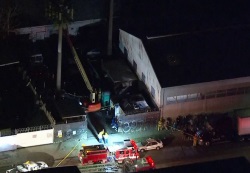 SOUTH LOS ANGELES (KABC) -- A 22-year-old man was electrocuted when a boomlift made contact with a power line in South Los Angeles Tuesday night, officials said.
SOUTH LOS ANGELES (KABC) -- A 22-year-old man was electrocuted when a boomlift made contact with a power line in South Los Angeles Tuesday night, officials said.
The incident was reported at 6:51 p.m. in the 300 block of East 87th Place.
Los Angeles Fire Department officials said the entire boom was energized with electricity when it made contact with the power line.
Witnesses said they heard an explosion and screams. Michael Montenegro said his landlord heard it first.
"I heard screaming, I ran out and I saw the entire thing was engulfed in flames and I just told her to call 911," he said.
A man believed to be 22 years old died in the boom basket. Witnesses said it appeared he and the basket were on fire after the electric shock.
A second individual, believed to be a 17-year-old male, jumped out from the boom and fell about 15-20 feet onto a metal roof. He was transported to a local hospital in fair condition.
Firefighters had to wait for more than two hours until Los Angeles Department of Water and Power crews came out to turn off the power before they could get to the 22-year-old man.
But resident Stephanie Aguirre said the man who died worked at a towing company. She said she thinks he was playing around with the boom basket and that's when the deadly accident happened.
Authorities said CALOSHA will be contacting the owner of the basket crane to figure out what happened.
The incident also knocked out power to 10 customers. The power was restored by around 8:30 p.m.
Source: www.abc7.com
Ask Bob
 Q. My guys use zoom booms (telehandlers) around power lines on construction sites all the time. Are there any rules about this kind of thing?
Q. My guys use zoom booms (telehandlers) around power lines on construction sites all the time. Are there any rules about this kind of thing?
A. Most regulatory agencies refer to what is known as a minimum approach distance (MAD), which is the closest you are allowed to get to an energized line, depending on its voltage. The most common one I have seen stipulates a MAD of 10 feet (3m) from power lines with voltages up to 50 kV (50,000 volts). For every 10 kV of voltage above 50, add 4 inches (10cm) of MAD. Check your local regulations though - they may be different. As a general rule, if you do not know what the voltage is, maintain at least 20 ft.
Safe + Sound Week to return Aug 13-19.
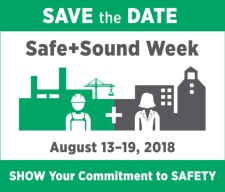 Washington OSHA, the National Safety Council, the American Industrial Hygiene Association and NIOSH are among the safety organizations that will team up for the second annual Safe + Sound Week, set for Aug. 13-19.
Washington OSHA, the National Safety Council, the American Industrial Hygiene Association and NIOSH are among the safety organizations that will team up for the second annual Safe + Sound Week, set for Aug. 13-19.
The nationwide endeavor is designed to promote awareness and understanding of workplace safety and health programs. Employers are encouraged to host events promoting the cornerstones of safety and health programs: management leadership, worker participation, and finding and fixing workplace hazards.
According to the Bureau of Labor Statistics, about 2.9 million nonfatal injuries and illnesses among private-sector U.S. employees were reported in 2016. Fatal workplace injuries exceeded 5,000, reaching their highest level since 2008.
Other participating organizers include the Voluntary Protection Programs Participants’ Association, the American Society of Safety Engineers, and the Center for Construction Research and Training (also known as CPWR).
Source: www.oshatoday.com
OSHA Fines Manufacturer $129,000 for Worker Injured in Scissor Lift Incident.
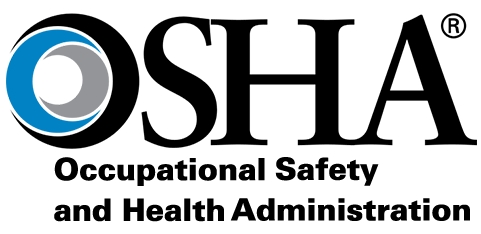 THOMSON, Ga. -- The U.S. Occupational Safety and Health Administration has proposed penalties totaling $129,336 against HP Pelzer Systems Automotive Inc., a Thomson-based manufacturer of auto acoustic components made from polyurethane foam, thermoplastics, composites and other materials.
THOMSON, Ga. -- The U.S. Occupational Safety and Health Administration has proposed penalties totaling $129,336 against HP Pelzer Systems Automotive Inc., a Thomson-based manufacturer of auto acoustic components made from polyurethane foam, thermoplastics, composites and other materials.
OSHA cited HP Pelzer because of an employee who suffered a severed fingertip on the job, according to an agency press release dated Jan. 30. The worker was removing a gear box motor from an energized scissor lift on Aug. 3, when the lift rotated unexpectedly, OSHA said.
HP Pelzer did not train the employee to recognize hazardous energy sources or perform proper lockout/tagout of those sources, OSHA said in its citation.
The Thomson plant's energy control procedures did not outline the steps for shutting down, isolating, blocking and securing hazardous equipment, according to the citation.
There also was no procedure to offer employees protection equivalent to that of lockout/tagout, the agency said.
OSHA gave HP Pelzer until Feb. 14 to comply with the order, request an informal conference with OSHA's area director or contest the citation before the independent Occupational Safety and Health Review Commission, OSHA said.
This is the third time OSHA has cited the Thomson facility of HP Pelzer for safety violations, according to the agency.
In February 2014, OSHA cited HP Pelzer and a staffing agency, Augusta, Ga.-based Sizemore Inc., for 22 safety and health violations, assessing penalties totaling $207,100.
Also, in September 2016, OSHA found 24 safety and health violations against HP Pelzer and Sizemore, with penalties amounting to $704,610.
According to OSHA, Sizemore terminated its staffing contract with HP Pelzer in May 2016, out of concern for the safety of the temporary workers it provided the manufacturer. At the time, Sizemore provided some 300 temporary workers to the Thomson plant, the agency said.
Officials of the HP Pelzer Thomson plant have not yet responded to a request for comments.
Source: www.rubbernews.com
What's Wrong With This? Photo
Can you tell what's going wrong in this photo?
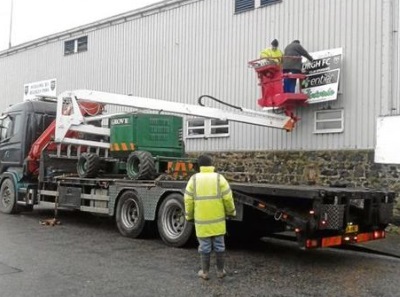
Have a photo you'd like to share? Send it to us!
Answer to Last Month's WWWT? Photo
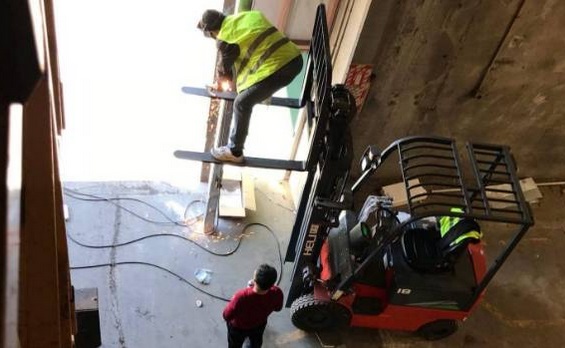
Here's what our Director of Training, Rob Vetter had to say about it:
- Working at height on the forks of a lift truck without using an approved elevating work platform.
- Working at height without using a fall protection system.
- The person on the ground assumed to be the forklift operator should (must in some jurisdictions) be seated at the controls of the truck.
- The area around the truck and elevated worker should be barricaded/cordoned off to prevent pedestrian/vehicle traffic from moving under the elevated machine and worker.
- Judging by the observable unsafe work habits in this photo, we could assume that the park brake of the forklift is probably not set.
Have a photo you'd like to share? Send it to us!
Interesting Articles
Tragedy as two excavator operators are buried alive in Enugu, Nigeria...more.
WorkSafeBC: New Storage Rack Regulation Effective January 1, 2018...more.
Gregory Charles's father, Lennox dies after being hit by a front end loader...more.
Excavator bucket hits car on Sydney's M5...more.
One man dead after forklift accident in Mississauga...more.
VIDEO: Firefighters use a forklift to save a horse from a freezing cold pool...more.
Vermont farmworker fatally run over by a front end loader...more.
Australian man suffers broken leg in forklift rollover...more.
Worker dies when boomlift and power line make contact...more.
Three people hospitalized in UK after faulty forklift releases carbon monoxide...more.
Indian driver killed as boulder crashes on excavator...more.
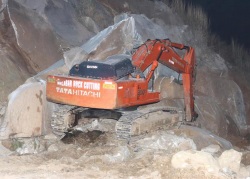
 Client Testimonials
Client Testimonials
"Thankful for IVES expertise! This will be a great improvement to our safety program." Scott, Litehouse Foods.
"Excellent program. Thorough, professional and complete." PJ, Dick's Lumber.
"Great course really enjoyed it. Mike, EV Logistics.
Did you enjoy this newsletter? Sign up for our newsletter to receive more like this!